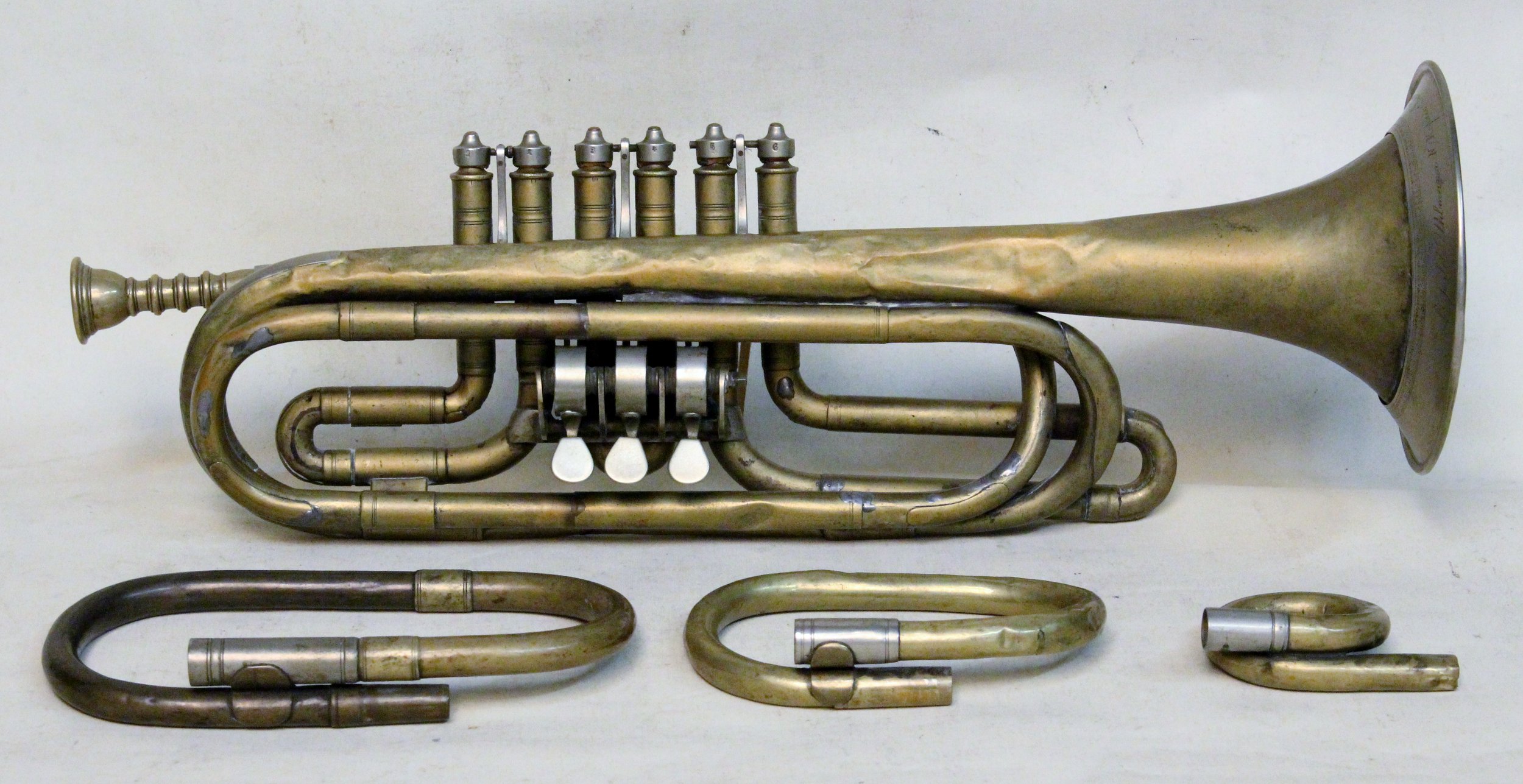1840s Orchestral F Trumpet by Leopold Uhlmann
According to "The New Langwill Index", Leopold Uhlmann was born in Vienna in 1806. He apprenticed with his father, Johann, a woodwind instrument maker. He also learned to play the horn and attended the Vienna Conservatory. In 1830, he received a royal Privilegium (patent) for his improvements of double piston valves that were invented about 8 years earlier by J. F. Riedl, also in Vienna. Leopold Uhlmann is best known for horns utilizing this type of valve, commonly called Vienna valves and most often seen in orchestral horns made from at least the 1840s and continued by his son after his death in 1878 until about 1900. Other makers have continued making Vienna style horns to this day, including a number of German makers and Yamaha.
Uhlmann's shop was well known for high quality valved brass instruments in the formative years of that device, from small trumpets to F contrabass valved ophicleides (small bore tubas). Aside from the famous "Vienna horns", most of Uhlmann's instruments from after about 1850 utilized rotary valves. A couple of examples illustrated on this site are a soprano Saxhorn in Eb and Bb and a flugelhorn in C. While it is difficult to accurately date an instrument like this trumpet, we can feel confident that the valve system and mention of the patent in the engraving would indicate that it is an early example.
The vast majority of Prussian and Austrian valved instruments from the mid to late 19th century were made for use in military bands. Two good examples on this web site are a Prussian Kornett (flugelhorn) and trumpet in G. The presence of crooks for key changes in this trumpet are what make it obvious that this is an instrument made for orchestral use. These were made in much smaller numbers than band instruments, resulting in extreme rarity today.
For many years, this important trumpet resided in the collection of horn player and former curator of musical instruments at the Library of Congress, Bob Sheldon, but recently found a new home in the collection of Boston historical trumpet specialist Chris Belluscio. When Chris first approached me with this restoration project, I tried to talk him out of it. Not only would it cost him a lot and without a promise of a good playing result, but I did not relish the prospect of finding out what was under all those patches and blobs of solder. While many hours were taken, the result was very rewarding for the both of us. I may never get to know so intimately another orchestral valve trumpet from as early a time and important a maker.
In the the photos below, I try to show how well designed and constructed the valve mechanism is. Uhlmann designed the push rod ends, where they attach to the valves, with a spring clip that is easily removed. This allows for easy disassembly for cleaning and oiling of the valves.
The restored trumpet plays much better than I had predicted, based on the amount of deterioration and abuse that it had seen. The crooks and mouthpiece that survive with the instrument were likely used with it in its last stage of original use, but may not be original. The mouthpiece may actually pre-date it and the crooks are miss-matched and modified.
In order to make this trumpet playable in G, F, E, Eb, D and C in both modern and early (A=430Hz) pitch, I only needed to make a straight shank for the lower pitches and an adaptor witch allowed the use of the smaller shank F crook (smallest shown). The photo below shows it set up for pitches C modern, C430, D modern and D430.
The overall length of this trumpet without crooks or mouthpiece is 15 1/2", the bell rim diameter is 5" and the bore measures about .425".

















